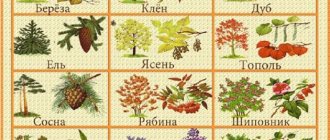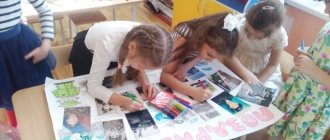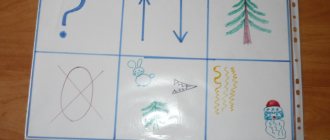Requirements for the calendar-thematic plan
Calendar-thematic plan is a plan that is drawn up for one of the academic disciplines (academic subject) and includes a list of topics, objectives for their study, the number of hours allocated to the topics, determination of the type of lesson, interdisciplinary connections, and methodological support. Working according to a calendar plan guarantees the implementation of programs and protects students from overload.
Requirements for the plan
Calendar and thematic planning is drawn up in printed form.
The title page must contain the following information:
Title of the document (calendar and thematic planning).
Name of the subject (must match the name in the curriculum).
Class.
Full name of the teacher.
Academic year.
"Approved: School Principal."
The name of the school in accordance with the Charter.
The teacher’s calendar and thematic planning is compiled in two copies (short and expanded).
A teacher’s brief calendar and thematic planning should contain the following columns:
Lesson number in order. Continuous numbering of lessons is used to show the correspondence of the number of hours of the curriculum used and the curriculum.
The name of the program section and the number of hours per section.
Contents (topic) of the lesson.
One topic can be designed for several lessons, which is indicated in the “Number of lessons” column. Upon completion of the topic, a control must be indicated. The names of practical and laboratory work must be indicated.
Number of hours.
Date (the planned date of the lesson, which must be entered at the time of submission of thematic planning). In the case of planning a block of lessons, the date of delivery is determined for each lesson. Necessary requirement: coincidence of the lesson dates according to the plan, the actual implementation and the entry in the class journal.
The teacher’s calendar and thematic planning must meet the following technical requirements:
A-4 format.
Font - Times New Roman.
The style of the main text is normal, the style of headings and section names is bold, the types of work are italic.
Size – 12, on the title page – no more than 18.
The interval is single.
Detailed calendar and thematic planning of the teacher must contain all the information of brief thematic planning and requirements for the level of training of students, which are formulated in an activity form (to know, to be able to).
Deadlines for drawing up and approval of calendar planning.
1. Calendar and thematic planning for each academic year is prepared in advance, before the start of the academic year.
2. Calendar and thematic planning is considered at a meeting of the subject methodological association, agreed with the deputy director of the school supervising the subject, and approved by the school director before the start of the school year.
3. A copy of the calendar and thematic planning is submitted to the deputy director in charge of the subject.
See document for all material.
Mandatory training sessions
Interim certification form (“Z” or “DZ” or “E”) Total Theoreticalclasses
Laboratory and practicalclasses
Courseworkprojects
(works)
I sem. II sem. I sem. II sem. I sem. II sem. I sem. II semester I II 96 32 64 58 6 DZ III IV TotalDistribution of hours by academic discipline (interdisciplinary course)
for distance learning
| Well | Maximum load | Independent work of students |
LIST OF REFERENCES USED.
- Kim Heldman, Professional Project Management / Beanom, 2005
-517 c.
- Lapygin Yu. N., Project management: from planning to performance assessment / Omega-L, 2008 - 252 p.
- Newell Michael W., Project Management for Professionals.
Guide to preparing for the certification exam / Kudits-press, 2008—416 p.
- Stanley E. Portney, Project Management.
- Optimization of the calendar plan for the implementation of a complex of interrelated works in the support system has been adopted. V. I. Karpov
- Automation of accounting for banking operations (Technical and economic characteristics of the subject area and enterprise)
- .Management functions: theoretical foundations
- The essence of JIT logistics technology
- Legal facts in civil law (The meaning of a legal fact in civil law)
- Concept and types of inheritance (Theoretical aspects of inheritance)
- International Hotel Service Standards (Theoretical basis of the international service standard)
- The role of the class teacher in working with parents of primary schoolchildren)
- “Features of social development of preschool children.”
- Features of organization management in modern conditions and ways to improve it)
- The structure of local government bodies and criteria for assessing their activities (using the example of a municipal entity called the city of Tobolsk)
- Inflation in the modern economy (The essence of inflation)
- Organizational culture and its role in modern organizations (Parus - Tver LLC)
Schedule Options
Main parameters of the calendar schedule:
- start and finish of work
- duration of work
- resource base
Project start date
Start and finish of work. Early start – the official start of work. Late finish – the date on which the work is scheduled to be completed. In addition, there is an even later start and early finish. The period between the initial dates and the closing dates is called slack. As a rule, the duration of the work remains the same, so the slack between early and late starts and early and late finishes will be the same.
Duration of work. Depends on the number of performers and their labor costs, the volume of work, customer requirements and other factors. Critical duration is the minimum within which the bulk of the work or even the entire project must be completed.
If we add up early start/late start and duration of work, we get early finish/late finish.
Resources. Resource constraints are taken into account when project development dates are set. After identifying the needs for all types of project work, the required amount of resources for each of them is calculated. Based on this, a graph of resource levels is constructed, the data of which is compared with the existing amount of resources. If the needs exceed the resource base, then it is possible to change the time in the calendar in order to cover them.
MAGAZINE Preschooler.RF
Scheduling Theme of the week: “Back to the past.”Period date: 8.02. 2021- 12.02.2022 Educator, group: Tereshkina. Ya.S, gr. Dolphin
Tasks:
- Expand children’s ability to see objects in the surrounding world in their development (past, present, future of the object).
- To deepen ideas about the objective world, about the history of the emergence of certain objects that make human life easier in everyday life;
- what these items looked like and how they were used in the past.
- Create conditions for children to develop the ability to predict the future of objects.
- Expected result: increasing the level of knowledge of older preschool children about ancient household items;
- manifestation of cognitive abilities, interest and desire for creative activity;
- formation of sustainable interest in the study of this problem;
- increasing children's, parental and pedagogical competence in matters of the history of the emergence of ancient things, culture and life of the Russian people in the old days.
Final event on the topic of the week, date, person in charge: Gatherings. Making a doll-amulet Krupenichka.
Interaction with parents on the topic of the week, including through the preschool educational institution website: Information in the parent corner about the start of work on the project, an invitation to participate; “The Cat Who Walked by itself” with children ; joint reading of Russian epics; visiting the museum Martyanov Hall “Russian Izba” ; select information and illustrations on the topic of the project; involve in the collection of natural materials: sticks, stones, rope; assistance in replenishing the book center.
Organization of RPPS on the theme of the week to support children's initiative and independence (independent activity in centers, development corners: place for viewing illustrations, paintings, albums “How our ancestors lived” ; “The first heroes of the Russian land” ; “The evolution of ordinary things” , “Slavic family. Kinship and occupations" ; sound recording of the song "Our Heroic Strength" by A. Pakhmutova to the verses of N. Dobronravov, sound recording of "Dawn on the Moscow River" by M. Mussorgsky from the opera "Khovanshchina" ; audio recording of the first musical instruments; encyclopedias, Russian folk tales ; add attributes, waste material to the center of the plot, role, games; markers of the playing space “Jurassic Park” ; diagrams, drawing algorithms, coloring pages, mathematical puzzles; attributes for theatrical games (masks, helmets...); album of the first musical instruments ; game; bags for throwing at a target, rope for tug-of-war, album for viewing “The First Olympic Games” .
Days of the week/daily routine
| Monday Date:8.02 | Tuesday Date:9.02 | Wednesday Date:10.02 | Thursday Date:11.02 | Friday Date:12.02 | |
| The first half of the day | |||||
| Group communication. Labor activity. Game activity. Work on the development of social and communication skills. Cognitive activity. Independent activity. (form of delivery, topic, purpose) | Greetings - wishes. (L. Svirskaya) Exchange of news. Working with the weather calendar. Observation, discussion Introduction to the topic of the week. View presentations “How they lived in Rus'.” Discussion. | Greeting "Stand up, those who love..." Exchange of news. Working with the weather calendar. Observation, discussion. Speech game “Finish the sentence” Goal: learn to write a sentence and develop attention. | Greeting “Introduce the neighbor on the right” Exchange of news. Working with the weather calendar. Observation, discussion. Making riddles about kitchen utensils. | Greeting "Confusion of names" Exchange of news. Working with the weather calendar. Observation, discussion. Acquaintance with folk signs. Educational conversation “How glass appeared.” Presentation + simple experiments | Greeting "Good wishes" Exchange of news. Working with the weather calendar. Observation, discussion. Conversation: “The history of the Internet.” Discussion D/I “What came first” - expanding children’s ideas about the life of the Russian people. |
| Supporting the child's individuality | D/exercise “Describe the picture” - writing a short descriptive story from 3-4 sentences (development of monologue speech) | Speech game "Fourth wheel". | Development of motor activity. "Standing long jump." | Conversation: “What does the proverb mean: In the winter cold, everyone is young. The frost is not great, but it’s not good to stand.” | Individual work on speech development: exercise in the selection of antonyms. |
| Morning exercises. Self-service. Hygiene procedures. | Morning exercise complex No. __12____ Continue to develop culturally hygienic skills. We wash our hands with soap before each meal, after going to the toilet, after visiting the music and sports halls thoroughly, and talk about the importance. We wash our face with both hands, filling our palms with water, and dry our face exclusively with our towel. | ||||
| Directly organized activities | Familiarization with the surrounding world. "Journey to the Past." Goal: to introduce children to the life and way of life of our ancestors. | FEMP. Strengthen ideas about the quantitative and ordinal value of a number within 17. Strengthen the ability to form the number 17 from ones. skills in measuring the size of objects; introduce the dependence of measurement results on the value of the conditional measure. Develop the ability to move in space in a given direction. the ability to model objects using familiar geometric shapes. | Speech development. Narration based on the painting by Bogdanov N.P. “Children in the Snow” tasks: continue to develop the ability to talk about the painting consistently with a logical conclusion; learn to describe your feelings and mood evoked by the picture; learn to select colorful expressions for description. Develop coherent, grammatically correct speech. Develop the ability to listen to your comrades. | Basics of literacy. Preparing for literacy instruction. Strengthen the ability to conduct sound analysis words, distinguish between vowels, hard and soft consonant sounds. Learn to name words with specified sound. "In the world of beauty Arts"; lesson 20. | Application “Golden Spikelet” - teach children to use the modular origami technique in a three-dimensional application. Develop imagination, creativity, and the ability to display ideas about objects and phenomena of the surrounding reality in applications. |
| Directly organized activities | FEMP. Learn to form the number 18 from two smaller numbers and decompose it into two smaller numbers. Strengthen the ability to identify the previous, subsequent and missing number to the one named or indicated by a number within 18. Practice the ability to measure the length and width of objects using a conventional measure. Continue to develop your orientation skills on a sheet of squared paper. | CHHL. Reading rns Vasilisa the Wise. teach children to understand the content of the work; develop children's speech activity and vocabulary. | Drawing. Topic: “Machine of the Future” - Teach children to invent an unusual, fantastic object, develop creativity, imagination, cultivate positive emotions when drawing, and the ability to evaluate their work. | PID "Volcano". introduce children to the concept of “volcano”, give an idea of the origin and structure of volcanoes; to form children’s ideas about a natural phenomenon – a volcanic eruption; develop the ability to properly handle chemicals (vinegar). | Paper construction. Volume basket. Learn to make a three-dimensional toy (basket). Strengthen the skill of cutting along the intended contour. Develop fine motor skills. |
| Directly organized activities | 2 Physical development according to the plan of the physical education instructor | 2 Music. According to the music director's plan | 2 Physical development according to the plan of the physical education instructor | 2 Music. According to the music director's plan. | 2 Physical development in the fresh air |
| Preparing for a walk. Walk | Work on developing self-service and mutual assistance skills. Walk No. _12___ teach how to fasten a tight button or tie a scarf when dressing for a walk. Help a friend standing next to you. _______ _________ _______ | ||||
| Work before bed | Perception of fiction and folklore Reading E. Uspensky. Winter in Prostokvashino. introduce children to the work of E. Uspensky “Three from Prostokvashino”; | Communication and interaction with adults and peers Games for developing friendly relationships between children “Find out who called you” | Communication and interaction with adults and peers Game situation “magic word”. formation of cultural behavior | Perception of fiction and folklore Reading an excerpt from a poem I. Surikova “Winter” Goal: to develop the ability to listen and understand the content of a work. | Perception and understanding of the meaning of musical works, singing, musical-rhythmic movements, playing children's musical instruments Orchestra – Kalinka Malinka |
| Finger gymnastics | Finger gymnastics No. _18___ | ||||
| Afternoon | |||||
| Climb. Gymnastics after sleep. Hardening procedures. | Gymnastics after sleep complex No. _12__ Health-improving gymnastics after sleep “To be healthy”, walking along massage paths with musical accompaniment Breathing exercises “Woke up.” | ||||
| Various types of children's activities and areas of work - Security basics Play activity Cognitive and research activities circle work Construction from various materials, including construction sets, modules, paper, natural and other materials Labor activity Creating communication situations Guest visits | Security basics. “Winter injuries in children” (prevention of childhood injuries). Presentation + discussion. Playing out situations. Evening circle. What new things have we learned, what do we want to know? Free independent play activities according to children's interests. | Creation of sit.,communication: “The history of the creation of the first car in Russia.” Presentation. (Pasha, Lyosha) View the presentation "Why dinosaurs became extinct." Discussion. Construction from waste material. "Model of a volcano." P/i “Empty space” | "Musical Package" Audio recording (listening). Identify familiar musical instruments by ear (accordion, bell, tambourine, harp). Children guess what instrument it sounds. Conversation. "The first stringed musical instrument." Conversation: “How coal appeared.” (Semyon) Free play activities based on children's interests. | Communication situation. "The history of the appearance of the first money." Presentation (Katya.K) D/exercise: “Before and now” - how household items and kitchen utensils have changed. (Maria Prokopyevna). Outdoor folk game - Snake. (held outside) Free independent play activities according to children's interests. | Final event. Gatherings. Making a doll-amulet Krupenichka. Free independent play activities according to children's interests. |
| Supporting the child's individuality | Examination of an album (with a subgroup of children) on the topic “Musical Instruments.” | D/i - “Which, which, which, etc.) - continue to work on enriching children’s vocabulary with adjectives | Individual self-care work with continue to teach how to neatly put things in the locker after a walk. | Individual work assignments for in a corner of nature | |
| < Previous | Next > |
2.1. BRIEF CHARACTERISTICS OF THE PROJECT
As part of the course work, a project was implemented to open a hardware store. The name of the project is “IP TechnoCity”. And, accordingly, the goal of the project is to open this store.
The result of the project is an open and fully functioning hardware store.
Next, I will describe competitors, target audience, project participants, restrictions and requirements for the project, assumptions, main risks, enlarged budget.
- Project description:
The advantage of the project compared to competitors is the opening location, as well as exclusive products.
- Purpose and reasons for creation
The purpose of opening a store is to make quick money and attract customers.
- Restrictions
Table 1. Constraints and requirements for the project.
| Restrictions | Requirements |
| Project deadlines | Have time to complete the project by 10/13/2020 |
| Budget | The project budget is: 4 million rubles. |
- Project participants
Project participants are listed in Table 2.
Table 2. Project participants.
| Job title | Name/Organization |
| Customer | Bogdanov I.S. |
| Project Manager | Averin E.A. |
| Builders | StroyDom LLC |
| Suppliers | Azekov I.R. |
| Sponsor | Putrin A.A. |
- The target audience
The target audience of this project is: young people who are interested in interesting technology.
- Competitors
Competitors are listed in Table 3.
Table 3. Competitors of the Technosity store
| Name of company | Short description | Direct competitors | Indirect competitors |
| AppleSales | A small store with certain goods and prices above the market. | + | — |
| TECNO-Shop | Online store of inexpensive and interesting equipment. | — | + |
| SityTech | Large hardware store, but far from the center | + | — |
The duration of the project is limited by the duration of the stages.
Figure 2. Project timeline.
So, in this section such concepts as: brief
characteristics of the project, research methods, project goals, project results, project limitations, competitors, target audience, and project deadlines.




